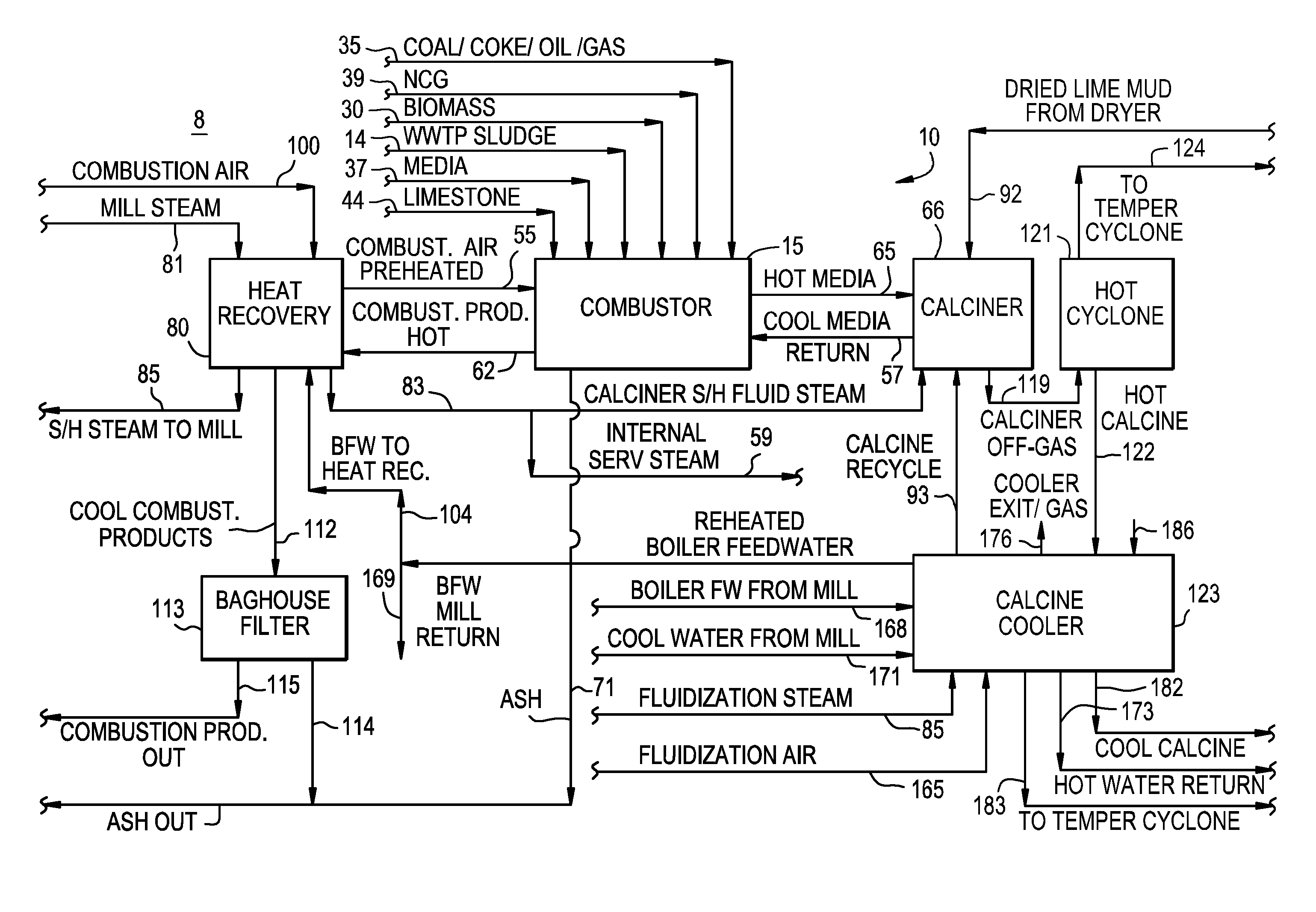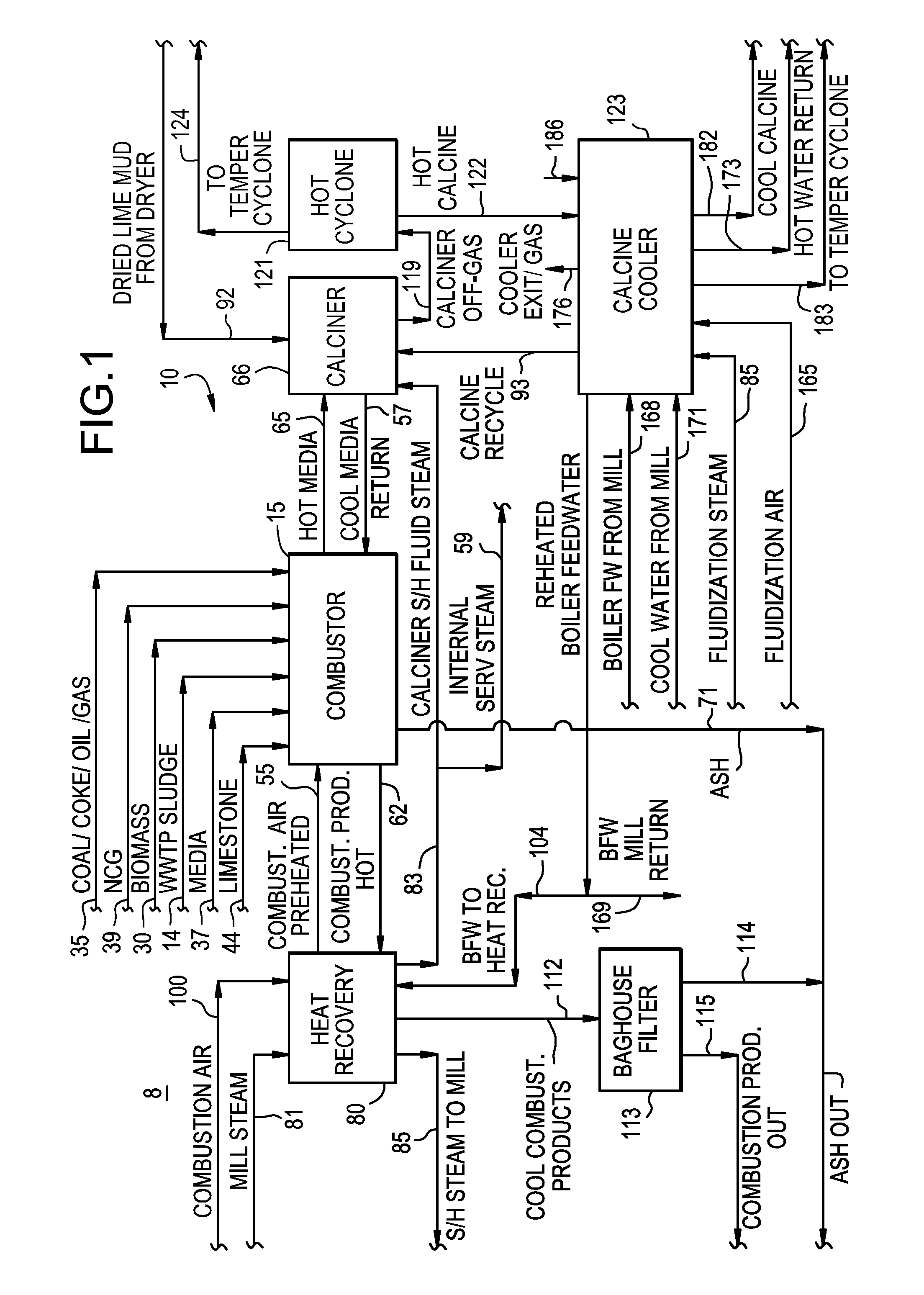Process and system for producing commercial quality carbon dioxide from recausticizing process calcium carbonates
a technology of recausticizing process and carbon dioxide, which is applied in the field of process and system for producing commercial quality carbon dioxide from recausticizing process calcium carbonates, can solve the problems of high cost, large amount of caustic, and difficulty in converting conventional lime mud calcination process to biomass fuels, so as to reduce the calcination process. , the effect of reducing the number of calcination steps
- Summary
- Abstract
- Description
- Claims
- Application Information
AI Technical Summary
Benefits of technology
Problems solved by technology
Method used
Image
Examples
Embodiment Construction
[0072]Unless otherwise specified, as used herein, the following terms mean the following:
[0073]By “lime mud” is meant a water-wet lime mud produced as a fine precipitated CaCO3 particle reaction product in a recausticizing manufacturing step where NaOH is made from the recausticizing reaction of CaO and Na2CO3.
[0074]By “waste water treatment (WWTP) sludge” is meant a primarily negative value water-wet sludge fuel as produced in a Kraft paper pulp mill's waste-water treatment plant (WWTP). This sludge contains organic, and inorganic, materials that may be rejected from various pulping and paper making steps. The energy content may be in the form of organic compounds, primarily cellulosic fiber and rejected lignins.
[0075]By “biomass” is meant a positive value fuel and may consist of bark, field trimmings, etc. derived from a mill's raw fiber feedstock (trees). The term also includes precipitated lignins.
[0076]By “non-condensable gases (NCGs)” is meant a noxious and explosive mix of me...
PUM
| Property | Measurement | Unit |
|---|---|---|
| Temperature | aaaaa | aaaaa |
| Temperature | aaaaa | aaaaa |
| Temperature | aaaaa | aaaaa |
Abstract
Description
Claims
Application Information
 Login to View More
Login to View More - R&D
- Intellectual Property
- Life Sciences
- Materials
- Tech Scout
- Unparalleled Data Quality
- Higher Quality Content
- 60% Fewer Hallucinations
Browse by: Latest US Patents, China's latest patents, Technical Efficacy Thesaurus, Application Domain, Technology Topic, Popular Technical Reports.
© 2025 PatSnap. All rights reserved.Legal|Privacy policy|Modern Slavery Act Transparency Statement|Sitemap|About US| Contact US: help@patsnap.com



